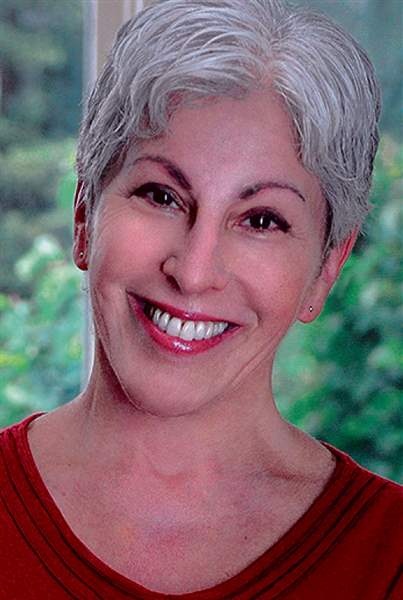
Getting to know Mollie Katzen
9/16/2013
Mollie Katzen
Handout

Mollie Katzen
Even at this point in her career, Mollie Katzen still feels the need to be clearing up Moosewood myths.
For starters, she is not a vegetarian. Of course, the author of perhaps the best-selling vegetarian cookbook of all time is not a meat advocate, but if you “put a few slices of steak on top of a salad” she said, she will eat them.
She does not live in Ithaca, N.Y., the locale of the famous Moosewood Restaurant that she helped found as a member of the Moosewood Collective in the early 1970s and then made famous by naming her first book of recipes after it. She has lived in Berkeley, Calif., for more than two decades and is not the collective type at all.
“I am much more of a lone ranger,” she said in a recent interview at the home of her agent in New York.
And despite selling roughly 4 million copies of her Moosewood Cookbook and having a PBS cooking show from 1995 to 2000, she says she is certainly not a celebrity chef.
“People know Moosewood,” she said, “but not Mollie.”
Katzen, 62, has definitely evolved; she has had two marriages, two divorces and two children. Her long brown locks, once held back by barrettes, are shorn and gray, and instead of using copious amounts of sour cream, she dresses her dishes up with fancy vinegars and roasted garlic.
But she has never left cooking. Since Moosewood, she has published 11 cookbooks and has a 12th coming out in September: The Heart of the Plate: Vegetarian Recipes for a New Generation. None has come close to matching the power of the first, which still sells 20,000 to 30,000 copies a year.
“People have an emotional attachment to it,” she said. “Forty years later, I am still grateful and not at all jaded about what happened with the Moosewood, the fact that it is still around the third and fourth generation.”
For all the gratitude, though, there is the odd fact that Katzen is one of those visionaries who have been rendered almost invisible because they succeeded in making the unheard-of commonplace. When the Moosewood Restaurant opened, America was a very different place.
“I grew up believing that vegetables were something that grew in my mother’s freezer,” she said of her otherwise idyllic childhood in Rochester.
At Moosewood, she said, the collective served only a few dishes each night, because fresh produce was hard to find for so much of the year.
“Now people make a big deal of buying local,” she said, “but back then the farm five miles this way and two miles that way was all that we had.” (She left the collective and the restaurant in 1978, amid some accusations that she had appropriated group recipes as her own.)
Given her role in kicking off an age in which vegetables are not just garnishes for meat, one might expect Katzen to be delighted by the farm-to-table movement. But that is only half right: She loves farm markets but is less keen about the food-worshiping culture that has risen with it.
“I personally do not like the word ‘foodie,’ because as human beings we are all innately drawn to food, so to make food a niche thing is wrong,” she said. “I don’t even like the word ‘chef.’ I think they can take the food and sometimes themselves very seriously.”
Of many of the superstar chefs on TV, she said, “I consider them to be entertainers and media personalities rather than cooks.”
Like the original Moosewood, her new book is all about accessibility and includes her illustrations, although this time she has added her photographs as well.
Katzen said she had never taken a cooking class, but in the introduction she emphasizes how much she has grown as a cook.
“Since the 1970s, I’ve both expanded my repertoire and simplified my approach,” she writes. “My early recipes were packed with rich ingredients like butter, cheese, sour cream, eggs, in large part to appease those who might be worried that the lack of meat would leave everyone hungry.” Now she has “a better understanding of how to make food taste wonderful through seasoning, selective and various uses of heat, timing, attention to detail and a stronger sense of aesthetic economy.”
These days, her idea of a great dish is to cut fresh tomatoes and peaches, let the juices seep out, then use fresh bread to sop them up.
“In the old days I didn’t pay attention to those juices,” she said, “and now that is the most exciting dish to me.”